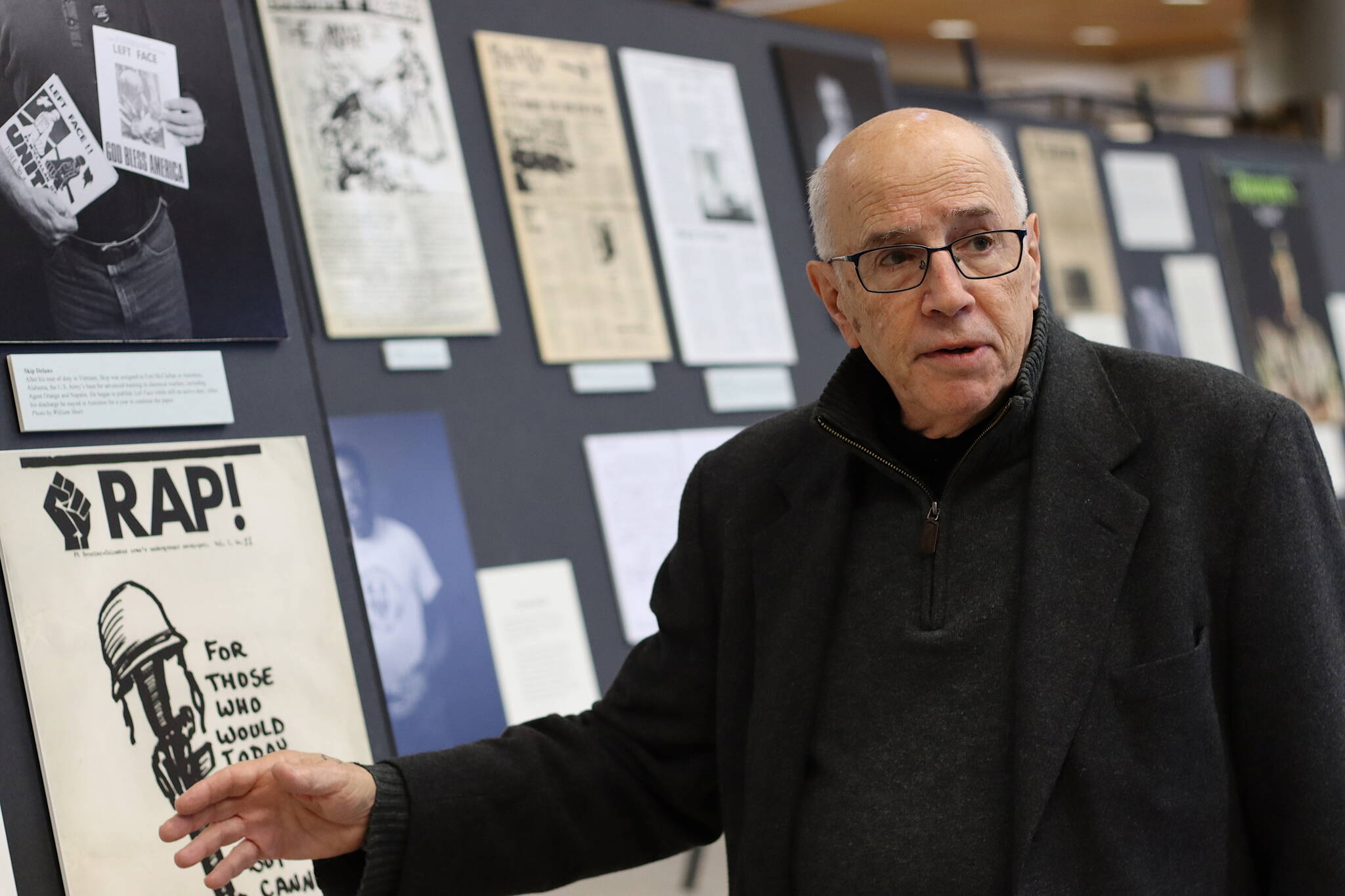U.S. soldiers reacting to bombings by their comrades by rescuing the Vietnamese citizens being attacked 50 years ago and the modern-day Alaskans who embraced two Russians fleeing the war-infused chaos in their country last month share a camaraderie of peace whose lessons needs to be preserved throughout the generations, according to Ron Carver, a civil rights and anti-war activist since the 1960s.
The hundreds of thousands of enlistees during the Vietnam War who engaged in demonstrations, spread their message through underground media and participated in humanitarian efforts “were part of a peace movement so robust it helped end the war,” he said Thursday during a preview of an exhibit at the University of Alaska Southeast detailing their cause.
He said those same lessons apply now as the two Indigenous Siberians who crossed the Bering Sea to St. Lawrence Island are among 300,000 Russians fleeing forced service for the ongoing war in Ukraine.
“We believe the way to help end the war in Ukraine is to help the Russians who don’t want to have any part of it,” Carver told a small crowd of students, instructors, local veterans and others during the preview in UAS’ Egan Library.
The exhibit, “Waging Peace In Vietnam: The Story of U.S. Soldiers and Veterans Who Opposed the War,” debuts Friday and will remain on display until Dec. 15, with a series of events scheduled during that time. The 17 storyboard panels on the library’s lower floor show what organizers call “peace marches, strikes, arrests, stockade revolts, mutinies, and other actions by rank-and-file military personnel and returning veterans.”
There are also photos, including some taken by Carver – who worked with U.S. Servicemen’s Fund from 1969 to 1971 helping to set up coffeehouses in Army towns where soldiers would meet to write antiwar newspapers to smuggle onto the bases — showing Vietnamese residents who were mangled or killed by U.S. attacks. But he said the horror of war isn’t the exhibit’s primary message.
“The purpose is not to haunt people,” he said. “It’s to highlight the GIs who choose to resist.”
While many people then — and now — regard military deserters harshly, Carver said many of those who disobeyed orders and risked prison by actions such as refusing to carry out attacks or fleeing to Canada deserve to be remembered differently by history.
“These were acts of strength, of courage and of patriotism,” he said.
For a few Juneau veterans who were at the preview the images and how those who objected are remembered is more personal.
“I was stationed at Fort Leonard Wood in Missouri and I taught thousands of troops to kill each other,” Don Gotschall, said by way of introduction to his service between 1958 and 1960 during the Korean War.
He said an encounter in high school with a minister who was a conscientious objector shaped his views on the tragedies caused by war, but he wasn’t able to protest in the way many others did during their service
“I stayed in the military to keep from starving to death during college,” Gotschall said.
UAS is 15th U.S. university to host the exhibit. Others have included the University of Notre Dame, University of Massachusetts, Columbia University, George Washington University and Duke University.
Events scheduled during the exhibit’s first days at UAS include an opening reception from 6-8 p.m. Friday featuring a keynote speech by Susan Schnall, former Navy lieutenant and president of the national board of Veterans for Peace. A roundtable discussion in the library from 1-4 p.m. Saturday will include Carver, Southeast Alaska Native veteran George Bennett, and prominent national enlistees who became war resisters.
Other events through Dec. 15 include film screenings, anti-war poetry and storytelling by veterans, and an awards reception where winners of an essay contest for UAS students will be recognized. The contest will be judged by Ron Haeberle, the Army photographer whose photographs of the My Lai Massacre became famous in LIFE magazine.
Among the UAS students at the preview was Charlene Zanoria, 22, who said the main lesson she learned was Carver’s emphasis on how the actions during past war times can apply now.
“I know now that GI resistance, they were the moving force for the troops to be removed from the war,” she said. “I know inside resistance is possible. We can do that with the current wars going on in the world.”
• Contact reporter Mark Sabbatini at mark.sabbatini@juneauempire.com

